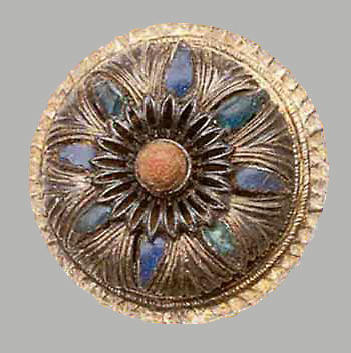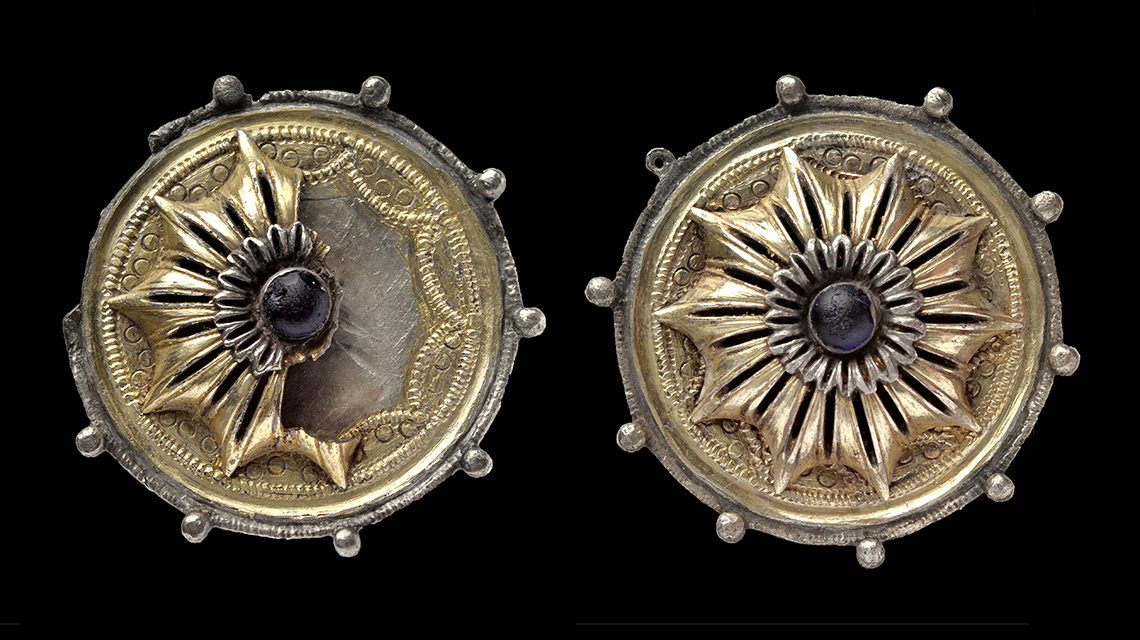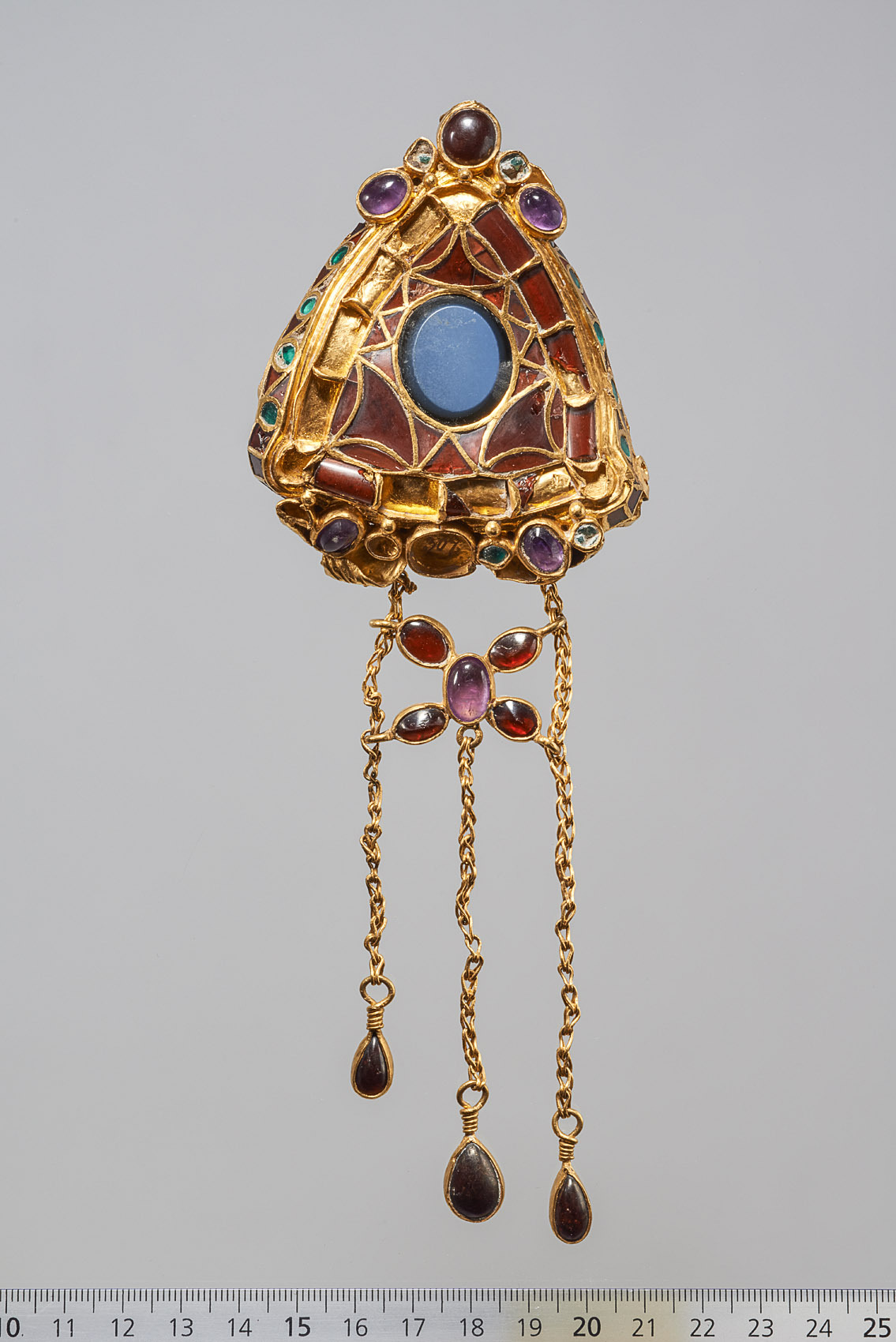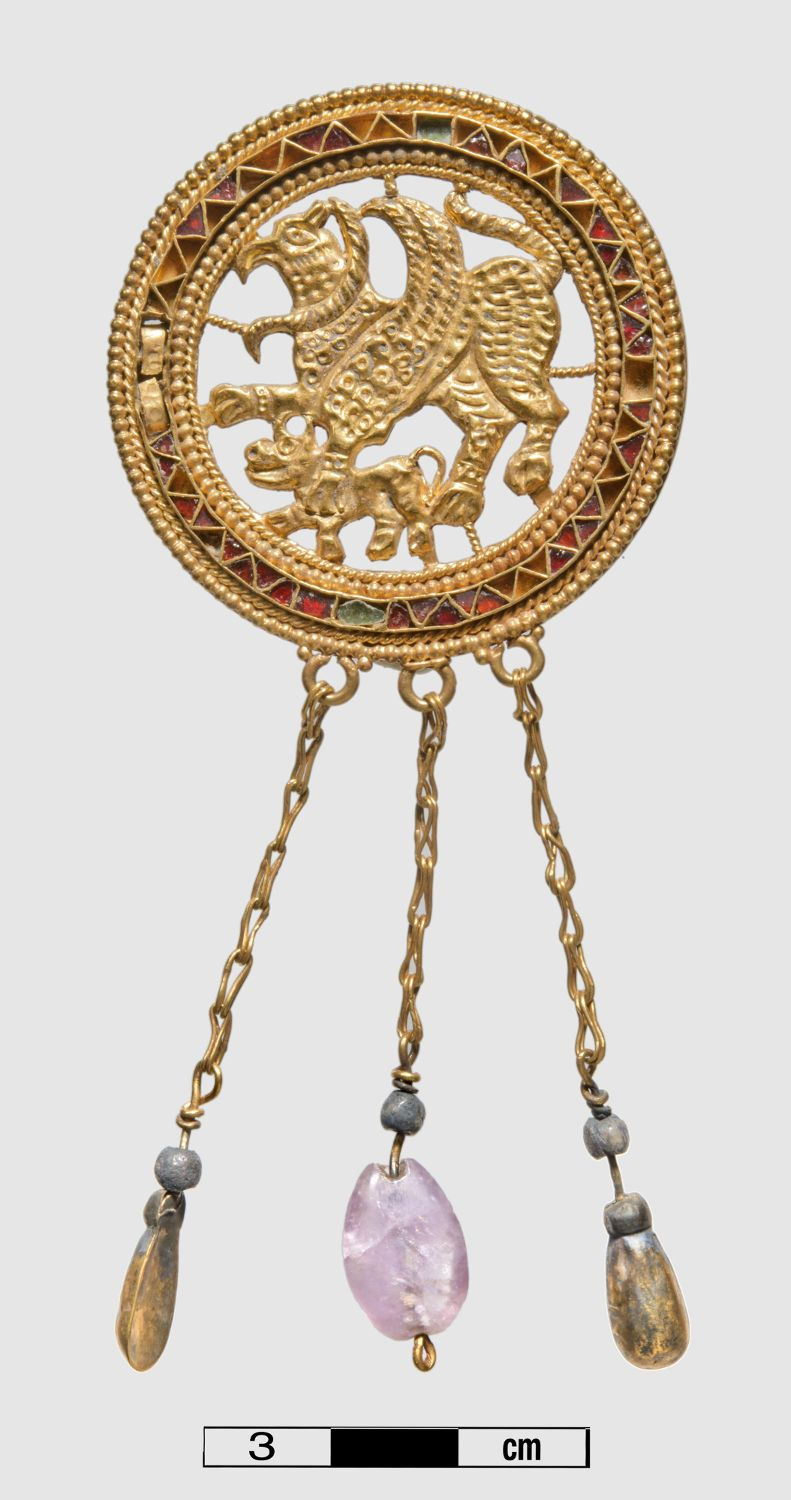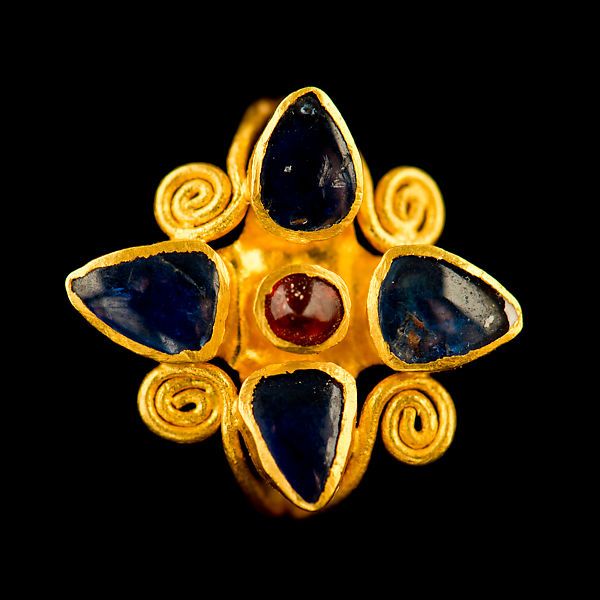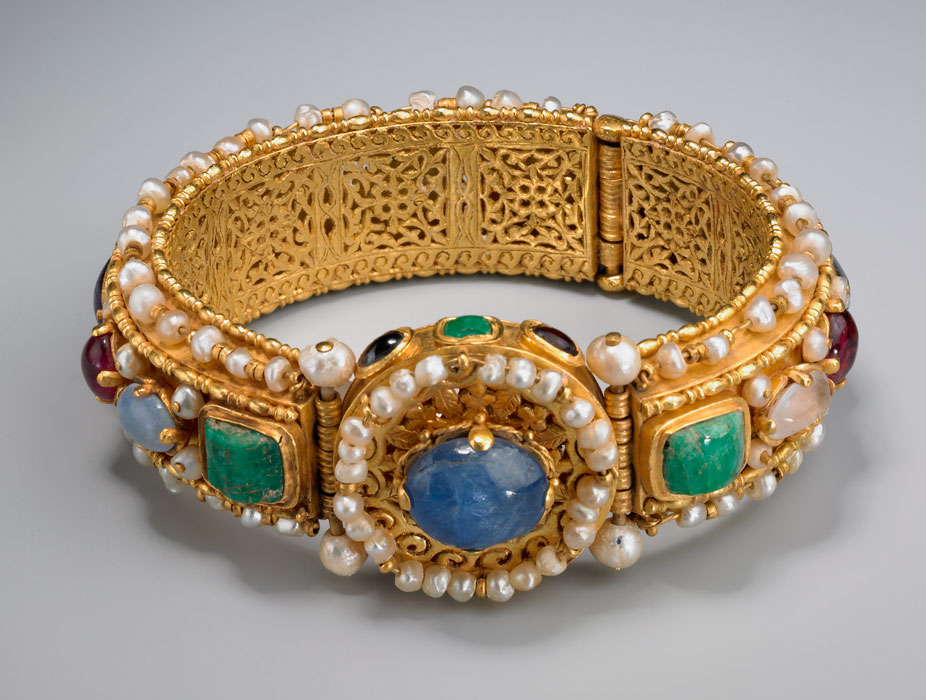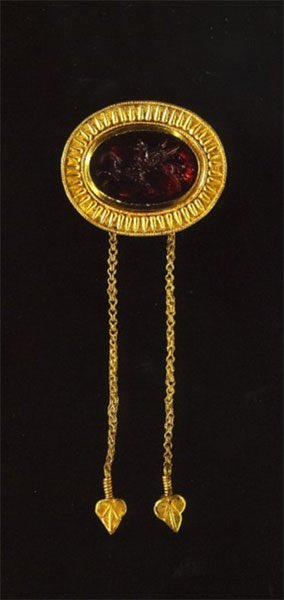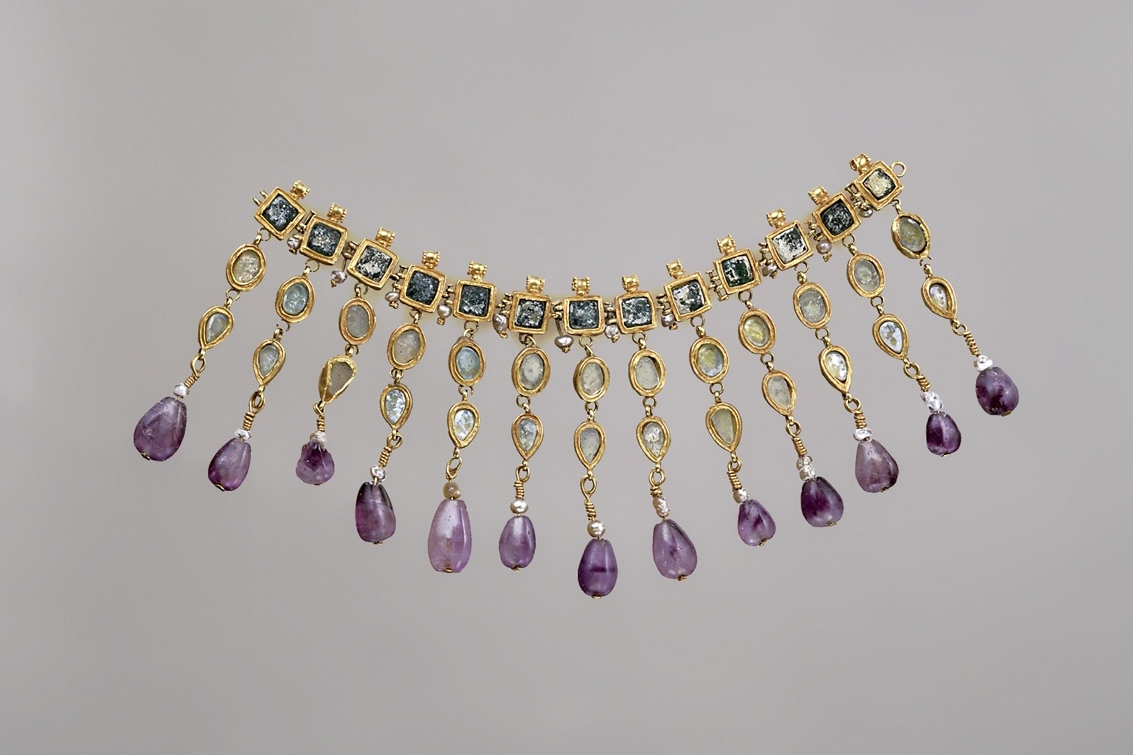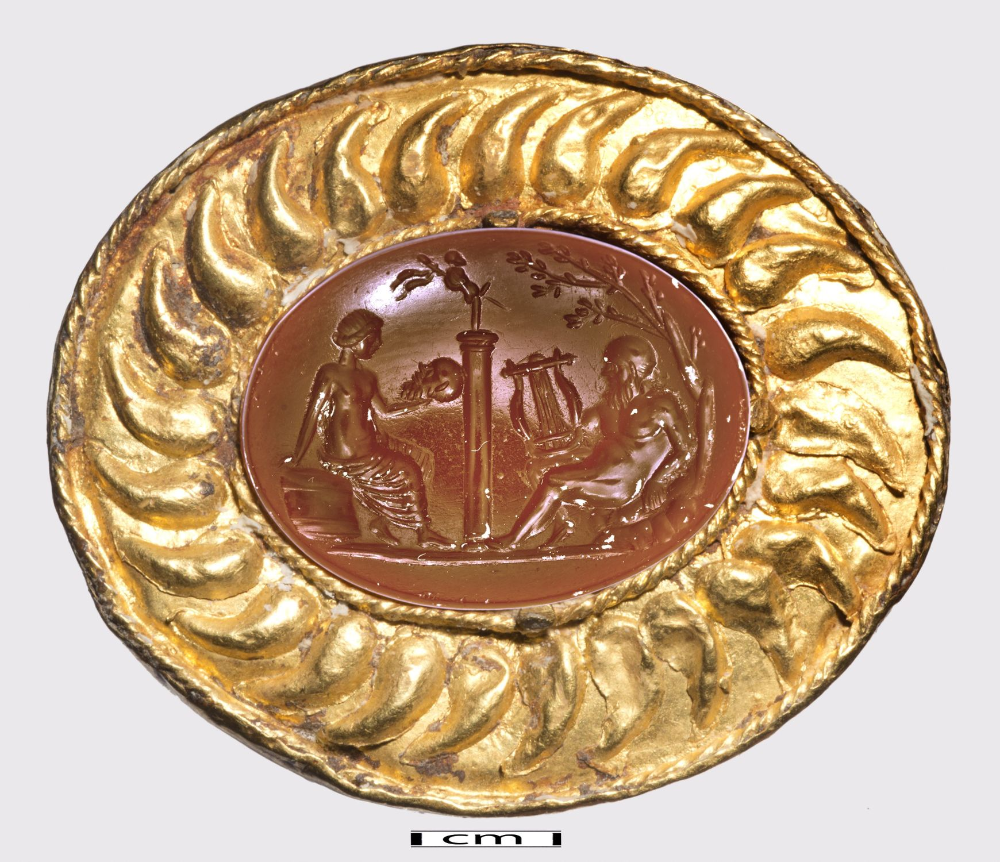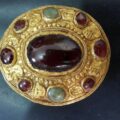
“Roman Onyx Fibula”
Created: 200 – 300 CE
Weight: 83.7 gram; 15 cm long
In the KHM Wien Inv. no. VIIb 306
The flat loops on the back side mean that this was an ornament sewn onto the cloth.
This “brooch” is 15 cm long, 6.5 cm of a top oval part plus the chain pendants.
Rethinking the Sutton Hoo Shoulder Clasps and Armour, Noel Adams https://www.academia.edu

Museum description
“In 1790, the contents were recovered from a richly furnished grave at Osztropataka in Hungary (now Ostrovany in Slovakia). It contained items made at different times by various cultures (Roman, Germanic). The circumstances of its discovery are not known. Considering the inventory of the grave, it seems likely that it was the burial site of a man who died in the second half of the 3rd century, or around 300 AD. It was one of the princely tombs of the Roman imperial age in which a member of the Vandal elite was buried. The preserved contents include jewelry and fibulae of gold, magnificent tableware of precious metal as well as a collapsible bronze tripod stand that once supported a bowl or a small tabletop. Among the magnificent pieces in the grave was this large fibula with an oval, three-layered brown onyx surrounded by a gold setting consisting of several components. The part of the frame visible from the front is decorated with openwork vines and ivy leaves and connected to the back of the frame by small sculptural dolphins. Hanging from the frame are two pairs of chains, each pair ending in a socket. Attached to the chains were four (one is now missing) foliate, openwork pendants. The basic shape of this magnificent piece is that of a disc shaped fibula as worn on imperial garments and documented in pictorial sources from the late imperial age to the mid-Byzantine period. Used to fasten a mantle (chlamys) at the right shoulder, they were typically disc-shaped, set with one or more precious stones, and had usually three pendilia (pendant chains) that extended down the chest. Based on its execution, technique and type of decoration, the “Onyx Fibula” was probably made in a Roman imperial workshop. It was likely a Roman gift to the Germanic ruler buried in Osztropataka-Ostrovany.”
© Kurt Gschwantler, Alfred Bernhard-Walcher, Manuela Laubenberger, Georg Plattner, Karoline Zhuber-Okrog, Masterpieces in the Collection of Greek and Roman Antiquities. A Brief Guide to the Kunsthistorisches Museum, Vienna 2011

